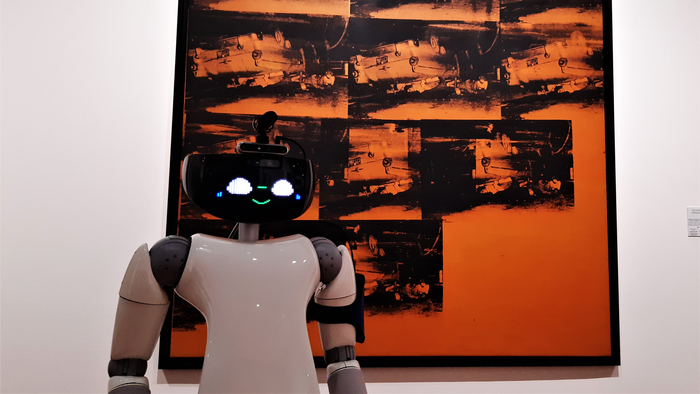IP Nanoker, a nanotechnology commercialization project, was a European Union 7th Framework Programme-funded project from 2005 – 2009. So, how does IP Nanoker end up in a June 11, 2014 news item on Nanowerk? The road to commercialization is not only long, it is also winding as this news item points out in an illuminating fashion,
Superior hip, knee and dental implants, a new generation of transparent airplane windows and more durable coatings for automotive engines are just some of the products made possible – and cheaper – by the EU-funded IP NANOKER project. Many of these materials are now heading to market, boosting Europe’s competitiveness and creating jobs.
…
Launched back in 2005, the four-year project set out to build upon Europe’s expertise and knowledge in nanoceramics and nanocomposites.
Nanocomposites entirely made up of ceramic and metallic nanoscale particles – particles that are usually between 1 and 100 nanometres in size – are a broad new class of engineered materials that combine excellent mechanical performance with critical functionalities such as transparency, biocompatibility, and wear resistance.
These materials offer improvements over conventional materials. For some advanced optical applications – such as windows for aircraft – glass is too brittle. Nanoceramics offer both transparency and toughness, and thanks to IP NANOKER, can now be manufactured at a significantly reduced cost.
Indeed, one of the most important outcomes of IP NANOKER has been the development of new dense nanostructured materials as hard as diamond. The fabrication of these super hard materials require extreme conditions of high temperature and pressure, which is why IP NANOKER project partners developed a customised Spark Plasma Sintering machine.
“This new equipment is the largest in the world (12 metres high, 6 metres wide and 5 metres deep), and features a pressing force up to 400 tonnes and will allow the fabrication of near-net shaped products up to 400mm in diameter”, explains project coordinator Ramon Torrecillas from Spain’s Council for Scientific Research (CSIC).
This is obviously a distilled and simplified version of what occurred but, first, they developed the technology, then they developed a machine that would allow them to manufacture their nanotechnology-enabled materials. It’s unclear as to whether or not the machine was developed during the project years of 2005 – 2009 but the project can trace its impact in other ways (from the March 27, 2014 European Union news release), which originated the news item,
The project promises to have a long-lasting impact. In 2013, some former IP NANOKER partners launched a public-private initiative with the objective of bridging the gap between research and industry and boosting the industrial application of Spark Plasma Sintering in the development of nanostructured multifunctional materials.
Potential new nanomaterial-based products hitting the market soon include ultra-hard cutting and mining tools, tough ceramic armour and mirrors for space telescopes.
“Another positive result arising from IP NANOKER was the launch in 2011 of Nanoker Research, a Spanish spin-off company,” says Prof Torrecillas. “This company was formed by researchers from two of the project partners, CSIC and Cerámica Industrial Montgatina, and currently employs 19 people.”
IP NANOKER was also instrumental in creating the Nanomaterials and Nanotechnology Research Centre (CINN) in Spain, a joint initiative of the CSIC, the University of Oviedo and the Regional Government of Asturias.
As a result of its economic and societal impact, IP NANOKER was selected as project finalist in two European project competitions: Industrial Technologies 2012 and Euronanoforum 2013.
Some three years after its completion, the positive effects of the project are still being felt. Prof Torrecillas is delighted with the results, and argues that only a pan-European project could have achieved such ambitious goals.
“As an industry-led project, IP NANOKER provided a suitable framework for research on top-end applications that require not only costly technologies but also very specific know-how,” he says. “Thus, bringing together the best European experts in materials science, chemistry, physics and engineering and focusing the work of these multidisciplinary teams on specific applications, was the only way to face the project challenges.”
The technology for producing these materials/coatings has yet to be truly commercialized. They face a somewhat tumultuous future as they develop markets for their products and build up manufacturing capabilities almost simultaneously.
They will definitely use ‘push’ strategies, i.e., try to convince car manufacturers, hip implant manufacturers,etc. their materials are a necessity for improved sales of the product (car, hip implant, etc.).
They could also use ‘pull’ strategies with retailers (convince them their sales will improve) and or the general public (this will make your life easier, better, more exciting, safer, etc.). The hope with a pull strategy is that retailers and/or the general public will start demanding these improved products (car, hip implants, etc.) and the manufacturers will be clamouring for your nanotechnology-enabled materials.
Of course, if you manage to create a big demand, then you have the problem of delivering your product, which brings this post back to manufacturing and having to address capacity issues. You will also have competitors, which likely means the technology and/or the buyers’ ideas about the technology, will evolve, at least in the short term, while the market (as they say) shakes out.
If you want to read more about some of the issues associated with commercializing nanotechnology-enabled products, there’s this Feb. 10, 2014 post titled, ‘Valley of Death’, ‘Manufacturing Middle’, and other concerns in new government report about the future of nanomanufacturing in the US‘ about a report from the US Government Accountability Office (GAO) and a May 23, 2014 post titled, ‘Competition, collaboration, and a smaller budget: the US nano community responds‘, which touches on some commercialization issues, albeit, within a very different context.
One final note, it’s interesting to note that the March 2014 news release about IP Nanoker is on a Horizon 2020 (this replaces the European Union’s 7th Framework Programme) news website. I expect officials want to emphasize the reach and impact these funded projects have over time.
